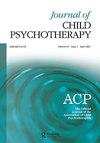Editorial
IF 0.8
Q4 PSYCHOLOGY, CLINICAL
引用次数: 0
Abstract
As child psychotherapists we are familiar with thinking about the influence of environmental factors in our clinical work. But what do we mean when we refer to the ‘external environment’, are we referring to the maternal, paternal, or family environment? Or are we referring to broader aspects, such as culture, class, race, racism, inequality and poverty, the impact of Brexit and immigration controls, wars and the climate emergency? A common experience many of us as child psychotherapists have faced, when raising such issues, is to be told that our focus has strayed away to the external world, when our attention, as psychoanalytic practitioners, should be on the internal world . . . There is also a wider question we are curious about and want to explore further: is there any meaningful division between internal and external in psychoanalytic thinking? How do we think of this division? And if we believe – as we do in the JCP – that the external and the political should be at the centre of our thinking, rather than an occasional ‘add on’, how do we ensure this is the case? Frosh and Baraitser (2008) (cited in Morgan, 2021) claim that it is an important political act to challenge the theoretical division of what phenomenologically cannot be divided as ‘the warp and the weft’ (p. 383) of the fabric of being. However, Morgan also puts forward Hoggett’s (2008) challenge to this, which is that ‘internal and external worlds, while overlapping and mutually constituting, are also irreducible to one another, each governed by its own rules of structure formation . . . the hyphen in psychosocial signifies a difference that cannot be dissolved’ (p. 383). Whatever each therapist’s position on this debate, all our work is inevitably done within the context of myriad psycho-social elements, coming from us, from our patients, and from the wider environments around us. We are keen to think both about why this is a challenging area, and how we can work towards improvements in our practice.社论
作为儿童心理治疗师,我们很熟悉在临床工作中考虑环境因素的影响。但是,当我们提到“外部环境”时,我们指的是母亲、父亲还是家庭环境?或者我们指的是更广泛的方面,比如文化、阶级、种族、种族主义、不平等和贫困、英国脱欧和移民控制的影响、战争和气候紧急情况?作为儿童心理治疗师,我们中的许多人在提出这些问题时都面临着一个共同的经历,即被告知我们的注意力已经偏离了外部世界,而作为精神分析从业者,我们的注意力应该放在内部世界上……还有一个更广泛的问题,我们很好奇,也想进一步探讨:在精神分析思维中,内部和外部之间是否存在有意义的区分?我们如何看待这种划分?如果我们相信——就像我们在日本共产党所做的那样——外部和政治应该是我们思考的中心,而不是偶尔的“添加”,我们如何确保这是事实?Frosh和Baraitser(2008)(引用于Morgan, 2021)声称,挑战现象学上不能被划分为存在结构的“经纬”(第383页)的理论划分是一项重要的政治行为。然而,Morgan也提出了Hoggett(2008)对这一观点的挑战,即“内部世界和外部世界在重叠和相互构成的同时,也是彼此不可约的,每个世界都有自己的结构形成规则……”社会心理中的连字符表示一种无法消除的差异”(第383页)。无论每个治疗师在这场辩论中的立场如何,我们所有的工作都不可避免地在无数的心理社会因素的背景下完成,这些因素来自我们自己,来自我们的病人,来自我们周围更广阔的环境。我们热衷于思考为什么这是一个具有挑战性的领域,以及我们如何在实践中改进我们的工作。
本文章由计算机程序翻译,如有差异,请以英文原文为准。
求助全文
约1分钟内获得全文
求助全文
来源期刊

JOURNAL OF CHILD PSYCHOTHERAPY
PSYCHOLOGY, CLINICAL-
CiteScore
0.70
自引率
50.00%
发文量
46
期刊介绍:
The Journal of Child Psychotherapy is the official journal of the Association of Child Psychotherapists, first published in 1963. It is an essential publication for all those with an interest in the theory and practice of psychoanalytic psychotherapy and work with infants, children, adolescents and their parents where there are emotional and psychological problems. The journal also deals with the applications of such theory and practice in other settings or fields The Journal is concerned with a wide spectrum of emotional and behavioural disorders. These range from the more severe conditions of autism, anorexia, depression and the traumas of emotional, physical and sexual abuse to problems such as bed wetting and soiling, eating difficulties and sleep disturbance.
 求助内容:
求助内容: 应助结果提醒方式:
应助结果提醒方式:


